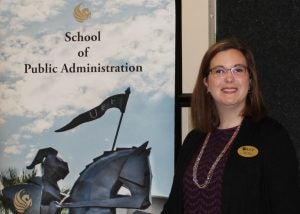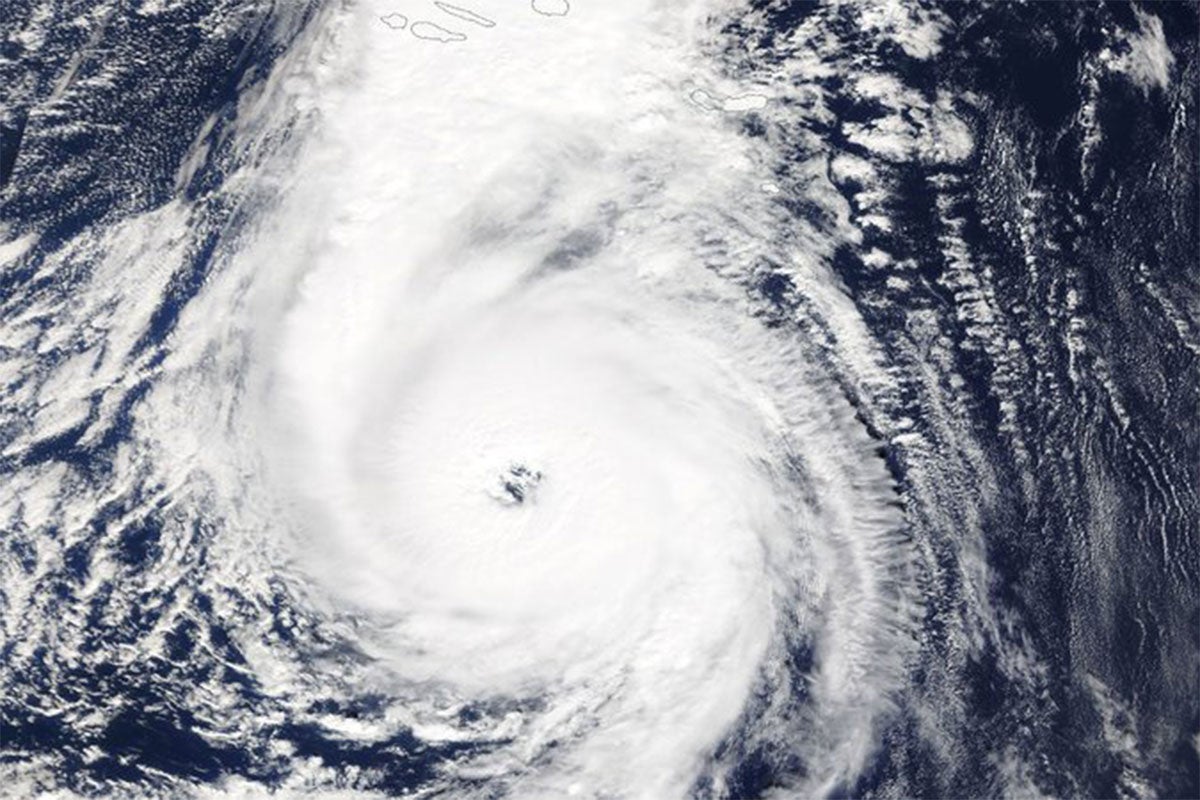Everyone knows that while disinformation is a problem, social media is a powerful tool for communicating fast in an emergency.
In 2011 only about 10% of the U.S. population turned to social media for information during a crisis, according to several studies. Today that number is closer to 70%. A new study from the University of Central Florida found that social media isn’t just good for communicating. It can be a critical tool for collecting intelligence in real time to better deploy resources before and after hurricanes hit.
Associate Professor of Public Administration Claire Connolly Knox looked at 23 Florida counties and their use of social media during Hurricane Irma. Results of the U.S. National Science Foundation study were recently published in Disasters.
For many Florida counties, Hurricane Irma in 2017 was the first time using social media during a disaster. Some counties were creative in using the latest social media tools, some didn’t use any social media during a disaster, and most were somewhere in the middle, Knox says.

Knox analyzed After Action Reports (AARs) from every county that completed them in Florida Division of Emergency Management (FDEM) Regions 4 through 7, which represents Central and southern Florida. These reports are not required by law but are considered a best practice to capture lessons learning during the response phase of an incident. The research team also held focus groups sessions to gather more detailed information. The in-person sessions included emergency managers from three counties (two coastal, one inland), one major city (population greater than 250,000), FDEM, the Florida Department of Transportation, a regional planning council, and two private sector organizations.
“While 95% of the counties who used social media discussed it in positive terms in the AARs and focus group discussions, less than half of the counties engaged in two-way communication, or pulled information for situational awareness or rumor management,” Knox says. “There is progress in using social media, but we certainly have a way to go.”
The findings can be grouped in two categories.
Challenges
- Funding for enough staff to keep up with information during crisis. Some counties were creative and used mutual aid or emergency management assistance compacts for needed staffing, while others relied on digital volunteers.
- No broad use of monitoring software to track social media information, which the public assumes local government is engaging in throughout the disaster.
- Misinformation
- Not all agencies are taking into consideration social media information to make real time decisions
- No consistent policies or guidelines for managing multiple government social media channels
- Technical issues (access, power)
Opportunities
- More government agencies recognize social media as communication vehicle
- General public is more familiar with many social media platforms
- Some agencies are tailoring information beyond Facebook that allows information to be targeted to specific neighborhoods. These include Twitter, Nextdoor, Instagram, YouTube, Periscope and Flickr.
- Sometimes, social media can be a critical tool. In one community, the 9-1-1 system went offline because of the storm. The local government was able to use social media to get critical information to its community.
One lesson learned — the public seeks out information about hurricanes on social media much more often before and during the storm than afterwards, so timing of messages is important as many lose power and are unable to access social media. Therefore, emergency managers are posting recovery information before the storm landfall. Additionally, knowing which social media account the public uses is vital. Nearly one-third of counties struggled with managing multiple social media accounts. For example, the City of Orlando has more than 50 social media accounts. Some counties were able to shut down and redirect the public to one Twitter or Facebook account for consistent disaster information.
There are certainly challenges such as correcting bad information and combating rumors, but social media can also provide rich information that properly shared can help emergency managers and their teams better respond to emergencies such as hurricanes, the researcher said.
Knox joined UCF in 2011. She is an Associate Professor and Founding Director of the Master’s in Emergency and Crisis Management Program in UCF’s School of Public Administration. She has a Ph.D. in public administration and policy and a master’s of public administration (MPA) (environmental policy and management concentration, emergency management certificate) from Florida State University. She is a member of UCF’s National Center for Integrated Coastal Research
She has nearly $5 million in funded research, and she has published more than 25 articles and eight book chapters in her areas of research which include: environmental vulnerability and disaster response, environmental policy and planning in coastal zones, cultural competency, and Habermas’ critical theory. Her co-edited book, Cultural Competency for Emergency and Crisis Management: Concepts, Theories and Case Studies, won the 2021 Book of the Year from the American Society for Public Administration’s Section on Democracy and Social Justice. She has also prepared multiple white papers and reports for municipalities looking to improve their emergency and resiliency planning in Florida and Louisiana.





